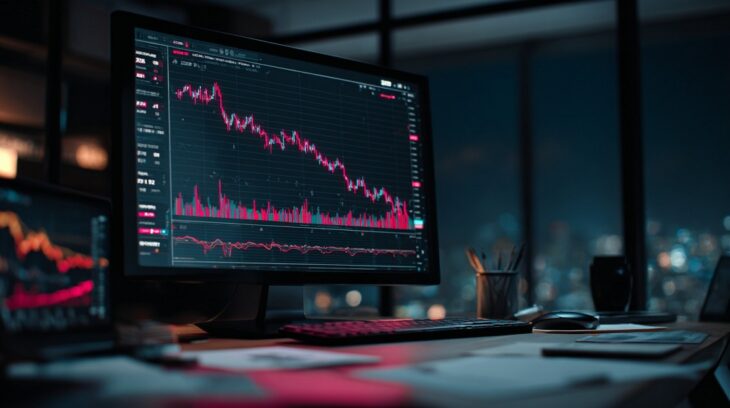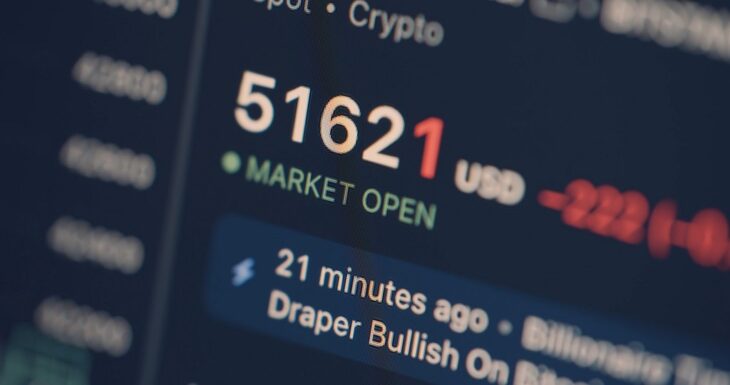Trading in financial markets continues to attract newcomers and experienced investors in 2025.
Forex and stocks rank among the most followed markets due to constant price movements, global participation, and access to user-friendly platforms.
Many traders in 2025 are asking which market brings higher profit potential and which suits their goals, budget, and available time.
Clear differences exist, and those differences shape results for every trader.
Core Differences Between Forex and Stocks
Clear separation exists between forex and stock trading, and each market operates under its own structure, timing, and instruments.
A closer look at these distinctions helps traders decide which environment suits their strategy and expectations.
Market Structure

Forex functions as a decentralised global network involving banks, brokers, liquidity providers, institutions, hedge funds, and individual participants.
Price formation arises through interbank activity rather than a single centralised authority.
Such a structure results in fast reactions to global events, economic updates, and unexpected shifts in sentiment.
Stocks operate in a regulated environment directed by formal exchanges. All transactions pass through centralised systems such as Nasdaq or NYSE.
Every listing must meet strict requirements, and all trades are overseen by exchange rules designed to ensure transparency and fairness.
Key points that define each structure include:
- Forex relies on over-the-counter transactions without a single exchange.
- Stock trades pass through centralised venues with strict regulatory oversight.
- Forex pricing updates instantly due to global participation across banks and institutions.
Stock pricing depends on exchange activity and may experience slower adjustments during low-volume periods.
Trading Hours

Forex offers continuous trading across five days a week.
Multiple sessions overlap, ensuring constant participation and uninterrupted movement.
Currency markets open with the Asia session, pass into Europe, and then shift into North America before looping back again.
Stock trading limits activity to specific hours set by each exchange.
NYSE and Nasdaq offer a narrow window compared to forex, and traders must adapt to these constraints.
Pre-market and after-hours activity exists but often shows lower volume and wider spreads.
Main timing differences can be pointed out:
- Forex remains active 24 hours a day over five days.
- Stock exchanges follow fixed opening and closing times.
- Forex sessions overlap, increasing movement across major pairs.
Stock activity peaks at market open and close, with quieter periods midday.
Instruments Traded

Forex focuses on currency pairs that compare the value of one currency against another.
Major pairs such as EUR/USD or GBP/USD attract the most attention, while minors and exotics add more variety for those seeking additional opportunities.
Stocks revolve around individual companies.
Buying shares means gaining partial ownership and participating in the company’s performance.
Well-known tickers such as Apple or Tesla often draw heavy interest due to strong brand presence and frequent news events.
Key categories within each market include:
- Forex majors, minors, and exotics.
- Stocks in tech, healthcare, finance, energy, and other sectors.
- Forex pairs react largely to interest rates, inflation data, and geopolitical factors.
Accessibility for Beginners
Beginners often look for markets that allow easy entry, flexible rules, and low initial costs.
Forex platforms generally support instant registration, instant deposits, small minimums, and simple interfaces suitable for newcomers.
Many brokers also accept crypto deposits, and traders often begin by converting fiat to crypto through exchanges before funding their accounts. This flexibility enhances accessibility for global users, especially in regions with limited access to traditional banking.
Stock trading in the United States imposes strict barriers for frequent active trading.
The PDT rule affects beginners strongly and limits how often they can trade unless they hold significant equity in their account.
Key accessibility points include:
- Forex supports tiny deposits, fast registration, and no PDT rule.
- Stock trading requires higher capital and includes more regulatory restrictions for active traders.
- Forex brokers often accept crypto deposits for fast account funding.
Profitability Potential in 2025
Profit potential varies greatly depending on capital, leverage, volatility, and market behaviour.
Clear differences exist that influence how quickly a trader may grow an account or experience risk.
Leverage and Capital Efficiency

Forex brokers often allow extremely high leverage.
Traders with small accounts can gain exposure to far larger positions, which increases both profit capability and risk.
Even a few dollars may be enough to place a trade in certain account types.
Stock accounts usually operate with far lower leverage.
Regulations restrict brokers from offering overly aggressive margin ratios, which forces traders to deposit more capital before opening substantial positions.
Key leverage contrasts include:
- Forex leverage may reach 1:1000 depending on jurisdiction.
- Stocks usually offer a 1:2 to 1:4 margin.
- Forex suits those with small starting capital.
Volatility and Market Movement
Forex pairs show frequent short-term bursts of activity. Intraday swings create numerous short-duration opportunities for those watching charts consistently.
Stock movement tends to follow a slower tempo unless major announcements occur.
Earnings seasons create spikes, yet everyday movement is often calmer than forex.
Important movement characteristics include:
- Forex pairs often shift dozens or hundreds of pips daily.
- Stocks may show moderate movement unless significant news arrives.
- Forex reacts to economic calendars and policy decisions.
Liquidity and Trade Execution
Forex remains the most liquid market worldwide.
High participation ensures fast order execution even during sharp price fluctuations.
Stock liquidity depends heavily on company size.
Large-cap stocks usually deliver smooth execution, while smaller ones may experience wider spreads and slower fills.
Key liquidity notes include:
- Forex volume reaches several trillion dollars daily.
- Stocks show variable liquidity based on capitalisation.
- Forex spreads stay tight for major pairs most of the time.
Risk Factors
Both markets involve risk, yet each one presents different triggers and levels of exposure.
High leverage in forex amplifies every price move, meaning even small fluctuations may result in large gains or losses.
Major economic reports and political events often cause sudden spikes.
Stocks carry lower daily volatility but include company-specific risk.
Earnings misses, executive changes, or legal issues may push prices sharply in unexpected directions.
Main risk points include:
- Forex risks intensify due to leverage and macroeconomic events.
- Stocks face risks related to earnings outcomes and internal company decisions.
- Forex volatility may surge during central bank speeches or rate changes.
Trading Styles and Time Commitment
Every trader approaches markets differently, and each asset class supports its own set of styles.
Forex attracts individuals who enjoy frequent setups and quick decision-making. Sessions overlap and create constant action for active traders.
Stock trading often appeals to those who want long-term growth or passive income.
Many investors prefer holding positions for months or years while collecting dividends and compounding returns.
Main style comparisons include:
- Forex works well for day trading, scalping, and swing trading.
- Stocks support long-term investing, dividend income strategies, and position trading.
- Forex traders often monitor markets throughout multiple sessions.
Closing Thoughts
Starting with a demo account helps new traders practice strategies without risk.
Many novices benefit from copy trading platforms where experienced traders share signals, allowing beginners to follow proven methods.
Continuous learning remains crucial since market conditions in 2025 shift quickly, and adaptability improves results for every trader.



